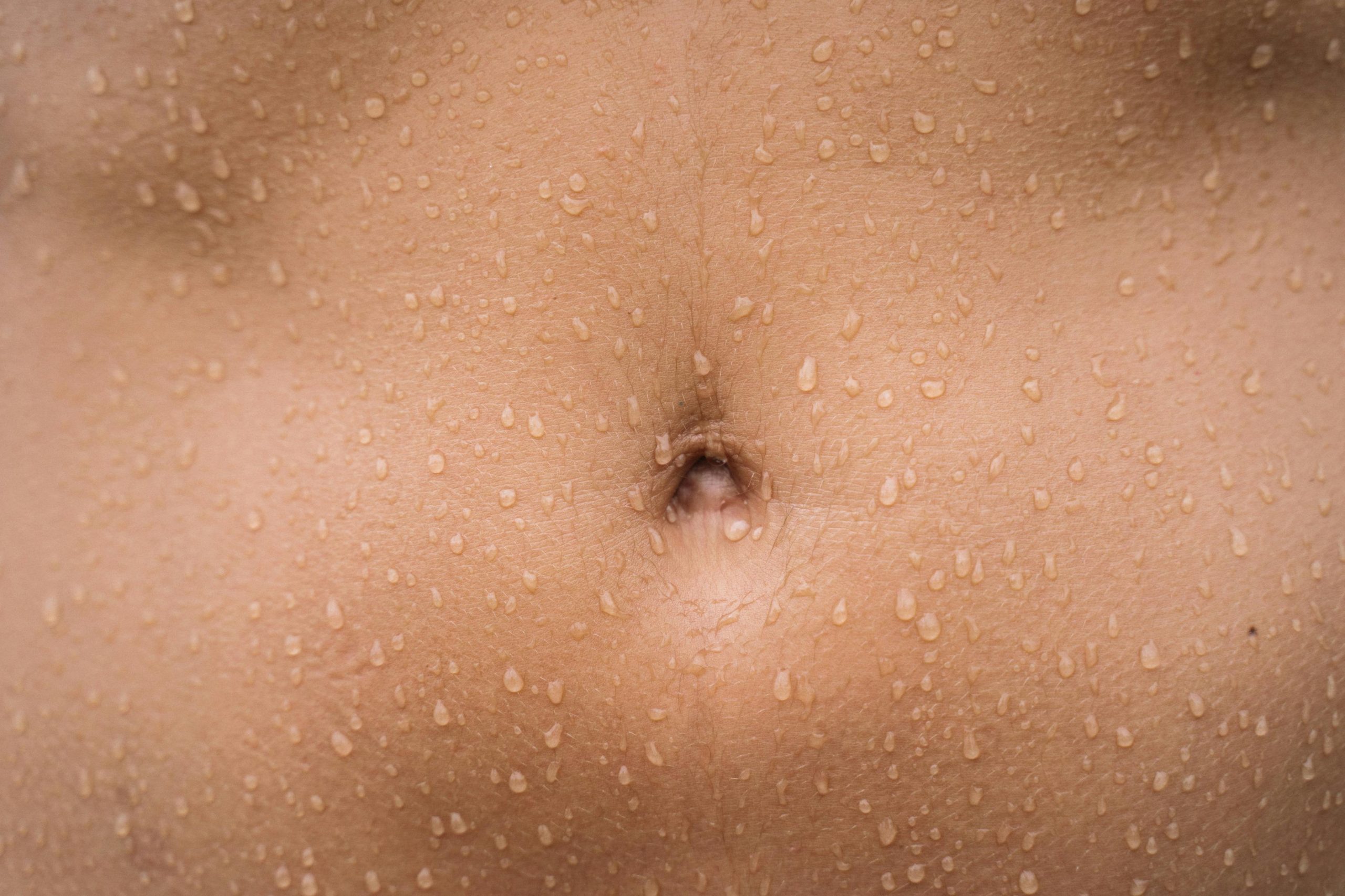With no significant function, your belly button can easily be forgotten or overlooked when it comes to personal hygiene, but your navel will show signs when it needs a bit of love and attention.
Being the ultimate breeding ground for dirt, sweat and bacteria, neglecting to clean your belly button correctly could lead to infections, unpleasant odours, and even discomfort.
As the belly button is an extremely sensitive area due to the skin in and around the crevice being thin, cleaning it requires careful caution. We’ll guide you through it.

Signs your belly button needs to be cleaned
Your navel will indicate that it might be under distress. Due to the build up of oil, dead skin, dirt or sweat over time, a belly button that needs to be cleaned has common symptoms that include:
- Red, itchy skin around the navel.
- Foul smells.
- Swelling.
- Yellow, green, or dark-coloured discharge.
- Persistent pain, particularly around a piercing.
- Blistering around the navel or piercing.
How to clean your belly button properly
Cleaning your belly button is a simple process that can be incorporated into your regular hygiene routine. Here’s how:
Gentle washing
Use a mild, unscented soap and warm water to gently wash the area around your belly button. Avoid using harsh chemicals or abrasive cleansers, as they can irritate the delicate skin in this area.
Soft cloth or cotton swab
Use a soft cloth or cotton swab to clean inside your belly button. Be gentle to avoid causing any irritation or injury. If using a cotton swab, make sure not to insert it too deeply into the belly button, as this can push debris further into the skin.
Thorough drying
After cleaning, thoroughly dry your belly button and the surrounding area with a clean towel. Moisture left behind can promote bacterial growth, so it’s essential to ensure the area is completely dry.
Moisturise (optional)
If your belly button tends to become dry, red or irritated, you can apply a small amount of moisturiser to the area after cleaning. Choose an unscented, gentle, hypoallergenic moisturiser to avoid any potential reactions.
What to avoid at all costs
While cleaning your belly button, there are certain things you should avoid to prevent irritation and further infection. Steer away from these common mistakes:
Avoid harsh scrubbing: Scrubbing your belly button vigorously can damage the delicate skin. Instead, opt for gentle, circular motions when cleaning to remove dirt and debris without causing harm.
Don’t use sharp objects: Avoid using sharp objects such as tweezers or needles to clean inside your belly button. These can cause injury and increase the risk of infection.
Skip the alcohol: While alcohol may seem like an effective way to disinfect the belly button, it can actually dry out the skin and disrupt the natural balance of bacteria. Stick to gentle soap and water for cleaning.
Avoid leaving moisture behind: After washing, make sure to thoroughly dry your belly button and the surrounding area. Moisture left behind can create an environment conducive to bacterial growth.
ALSO SEE:
Feature Image: Dupe

